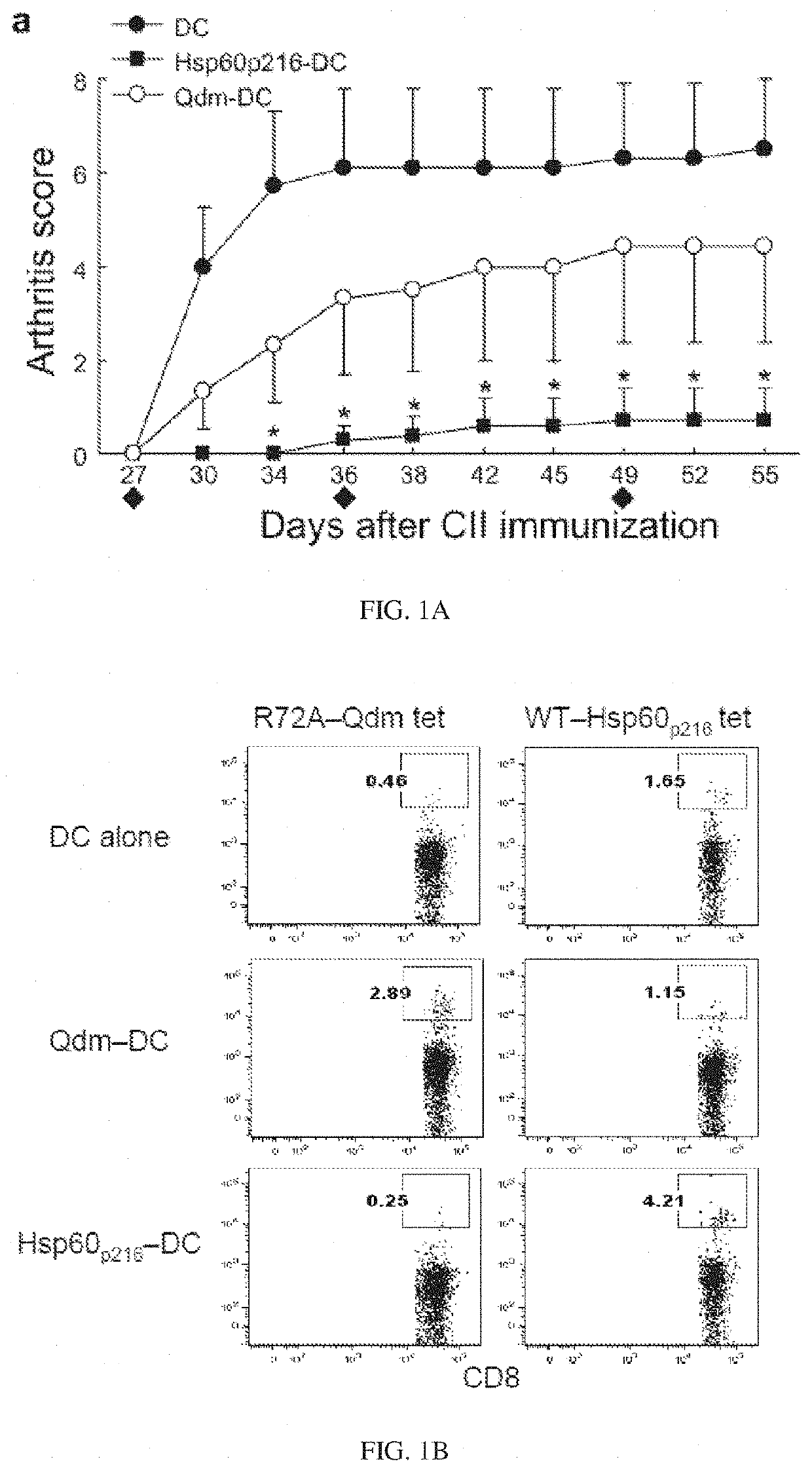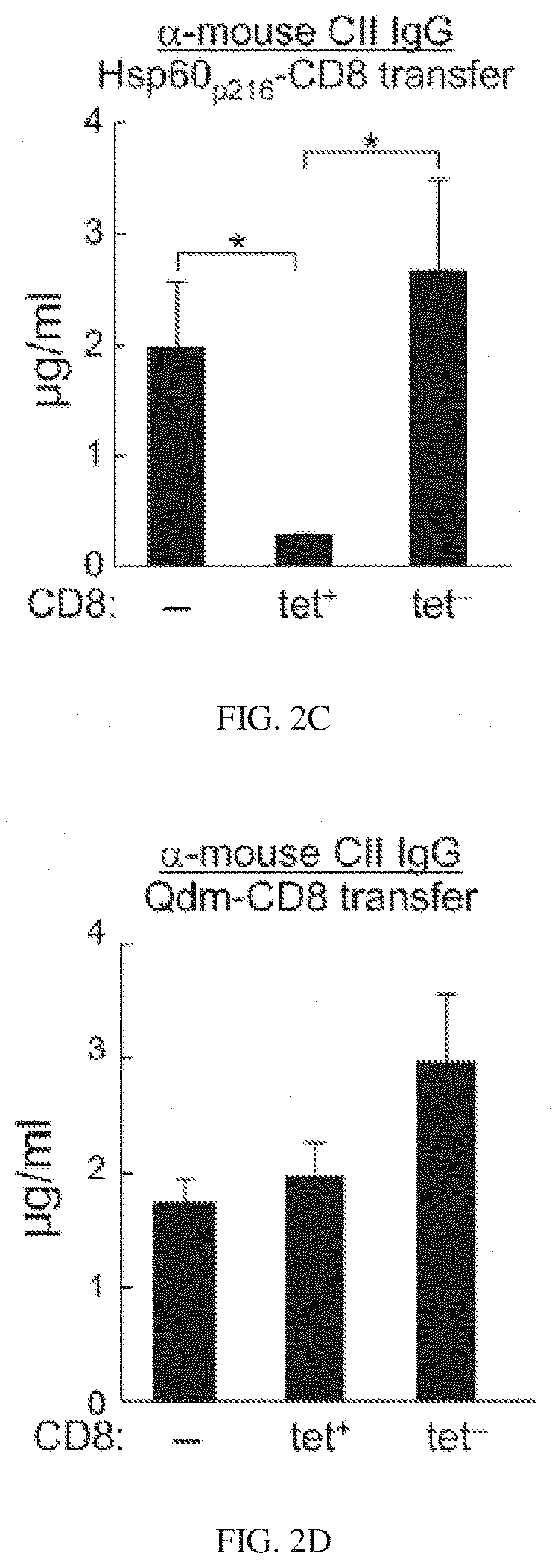Targeted expansion of Qa-1-peptide-specific regulatory CD8 T cells to ameliorate arthritis
a cd8+ t cell and peptide-specific technology, applied in the field of nanoparticles and methods for treating autoimmune diseases, can solve the problems of incomplete process, insufficient cell-intrinsic mechanisms to prevent the development of autoimmune disorders, and insufficient understanding of the potential contribution of cd8+ treg cells to the pathogenesis and treatment of autoimmune diseases, so as to improve a symptom, improve a symptom of autoimmune disease, and improve the symptom of autoimmun
- Summary
- Abstract
- Description
- Claims
- Application Information
AI Technical Summary
Benefits of technology
Problems solved by technology
Method used
Image
Examples
example
[0056]A small subset of CD8 cells is essential for the maintenance of self-tolerance and plays an important role in the inhibition of autoimmune disease 1. This subset of regulatory T cells recognizes Qa-1-peptide complexes that are upregulated by pathogenic CD4 T cells, resulting in elimination of these cells through perforin-dependent lysis. Development of strategies based on in vivo expansion and activation of CD8+ Treg represents a new avenue of immunotherapy for the treatment of autoimmune diseases.
Antigen Presentation by Qa-1 (HLA-E):
[0057]Two major peptides presented by Qa-1 (HLA-E) are Qdm (B7sp in human) and Hsp60p216. Qdm (B7sp) is a peptide derived from the leader sequence of MHC class Ia which can bind to both the TCR and to CD94 / NKG2A receptors. The Hsp60p216 peptide can efficiently replace Qdm peptides under conditions of cellular activation and stress. A third peptide that is presented by Qa-1 under conditions of defective antigen processing in the endoplasmic reticul...
PUM
| Property | Measurement | Unit |
|---|---|---|
| biocompatible | aaaaa | aaaaa |
| flexible | aaaaa | aaaaa |
| affinity | aaaaa | aaaaa |
Abstract
Description
Claims
Application Information
 Login to View More
Login to View More - R&D
- Intellectual Property
- Life Sciences
- Materials
- Tech Scout
- Unparalleled Data Quality
- Higher Quality Content
- 60% Fewer Hallucinations
Browse by: Latest US Patents, China's latest patents, Technical Efficacy Thesaurus, Application Domain, Technology Topic, Popular Technical Reports.
© 2025 PatSnap. All rights reserved.Legal|Privacy policy|Modern Slavery Act Transparency Statement|Sitemap|About US| Contact US: help@patsnap.com



